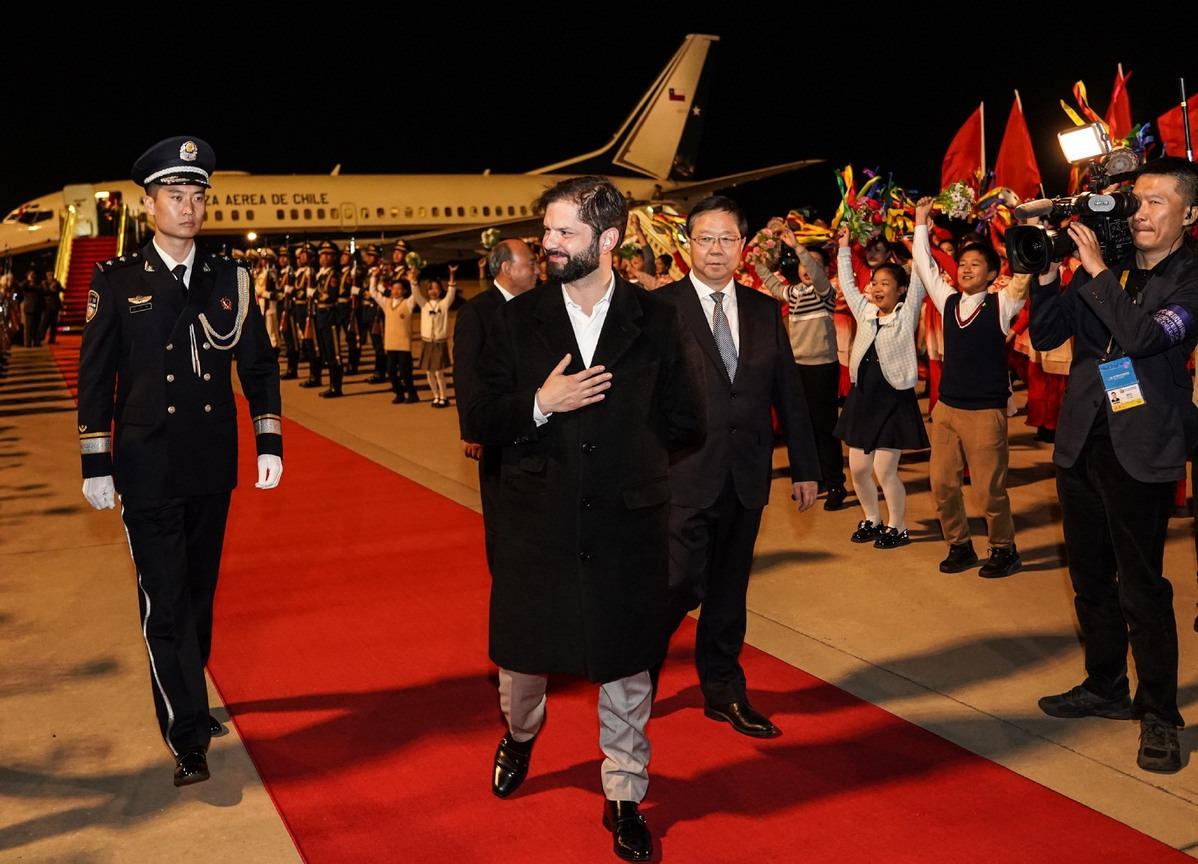Furthest partner by distance from China using initiative to move closer
 Chilean President Gabriel Boric arrives at Beijing Capital International Airport to attend the Third Belt and Road Forum in Beijing, China, Oct 15, 2023. (PHOTO / XINHUA)
Chilean President Gabriel Boric arrives at Beijing Capital International Airport to attend the Third Belt and Road Forum in Beijing, China, Oct 15, 2023. (PHOTO / XINHUA)
With his participation last week in the third Belt and Road Forum for International Cooperation in Beijing, Chilean President Gabriel Boric conveyed a powerful message. In so doing, Chile became the only Latin American country to have taken part at the presidential level in all three such forums.
Then Chilean president Michelle Bachelet did so in May 2017, and then president Sebastian Pinera did so in April 2019. Now Boric, in his first visit to China, has followed in their footsteps.
On the 10th anniversary of the Belt and Road Initiative, there has been much reflection on what this ambitious program has achieved so far.
Notably, Chile is the BRI participant country that is the farthest from China.
Today, 22 countries in Latin America have signed memorandums of understanding with China on the BRI, and eight have joined the Asian Investment and Infrastructure Bank. In May 2017, Bachelet was the first head of state to visit the headquarters of the Asian Infrastructure Investment Bank, when Chile became a prospective member.
What has happened since?
The Belt and Road, China’s most ambitious foreign policy initiative this century, quickly evolved to span the Eurasian region, connecting the world’s fastest-growing area, East Asia, with the European Union, and has now become even grander.
The BRI offers a new development proposal for the Global South. This proposal is markedly different from the traditional one put forward by the post-World War II Bretton Woods institutions and the West more generally.
Infrastructure and connectivity are powerful drivers of development. China has demonstrated this and is doing the same for countries in Asia, Africa and Latin America.
Latin America suffers from a huge infrastructure deficit, estimated by the Inter-American Development Bank to be around $150 billion a year.
This hampers the region’s international competitiveness, so China’s offer to step in was most welcome.
In this context, in 2015 and 2016, Latin American countries and China looked for ways to extend the BRI across the Pacific and make it reach the Western Hemisphere. Although not yet materialized, one of the first expressions of this was Chile’s formal proposal to China in January 2016 to install an underwater fiber-optic cable from Valparaiso to Shanghai. This would have been the first internet cable connecting Asia and South America, and the first across the South Pacific. It was also seen as one of the very first manifestations of what would become known as the “Digital Silk Road”.
China has long been Chile’s No 1 trading partner. Chile was the first country in South America to establish diplomatic relations with China, in 1970. In 2005, it became the first individual country anywhere to sign a free trade agreement with China. Since then, Chile-China bilateral trade has increased eightfold, reaching about $61 billion in 2021. Almost 40 percent of Chile’s exports go to China. In addition, in recent years, China has also become a leading source of foreign direct investment in Chile. It was the biggest source of FDI in 2019, and again in 2021.
President Boric’s state visit to China has thus provided an opportunity to continue to expand this flourishing relationship.
The author is a research professor at the Frederick S. Pardee School of Global Studies and interim director of the Pardee Center for the Study of the Longer-Range Future at Boston University. He was Chile’s ambassador to China from 2014-17.
The views do not necessarily reflect those of China Daily.


